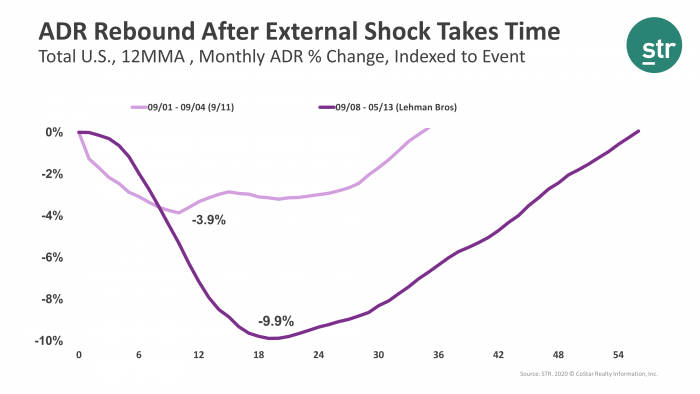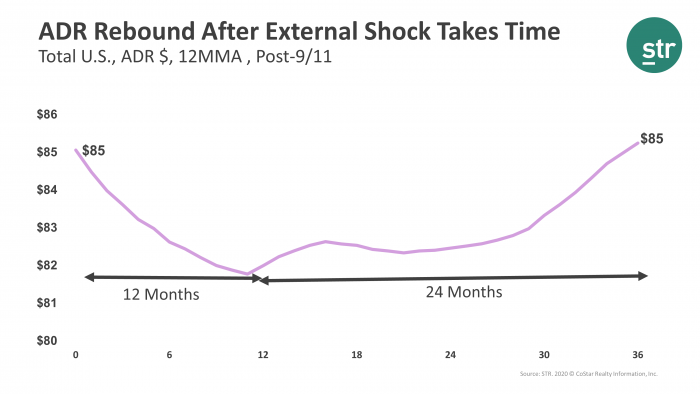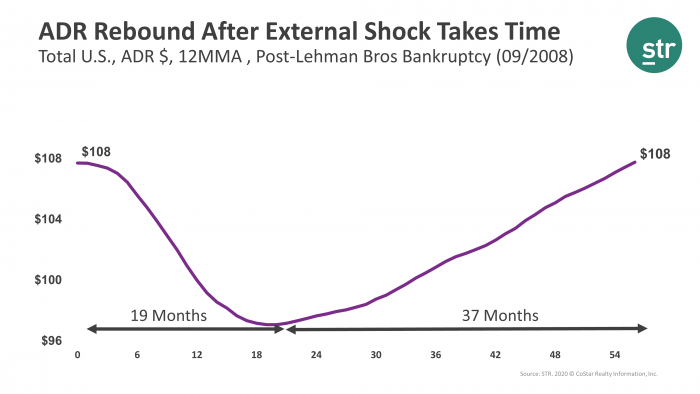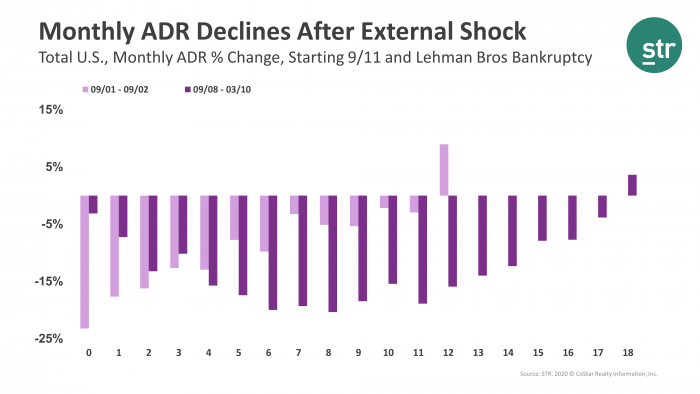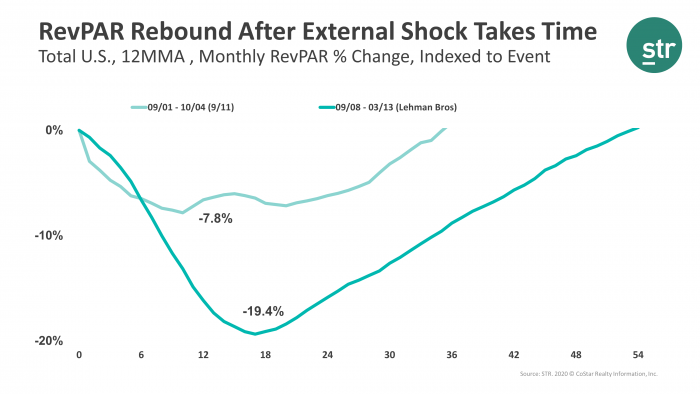STR continues to monitor each week of U.S. hotel performance data for a possible impact from the COVID-19 outbreak. With expectation of performance declines around this situation, we analyzed U.S. ADR and RevPAR declines post-9/11 and post-2008.
ADR takes time to recover
First, let's explain the math.
Hold the month of the event (September 2001 and September 2008) constant and compute the % change (for 12MMA ADR) from each month following until the % change turns positive again. As you will see, this took 36 months post 9/11 and just under six years post-2008.
